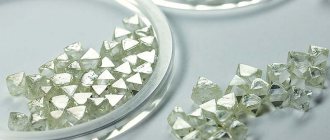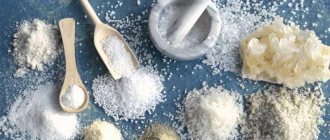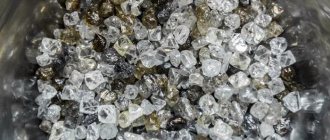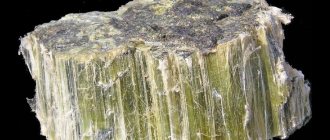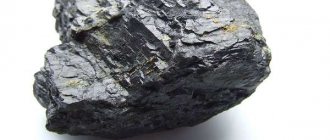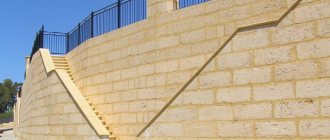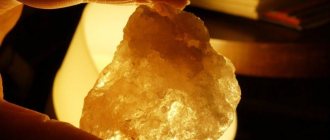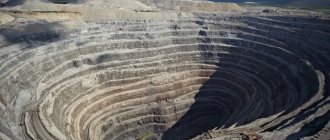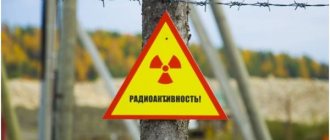Without salt, humans and other living organisms cannot exist. It contains chlorine ions necessary for the production of hydrochloric acid, which is an important component of gastric juice. Salt imbalance can cause various diseases, this applies to both excess salt and its lack in the body.
Salt products used by humans are a multi-species product category, including coarse, fine, lump, iodized, regular, and sea salt. The most common product is sodium chloride, which we use to salt food. But how is salt obtained?
History of salt mining in Russia
Many people are interested in the question, where is salt mined in Russia? History mentions a deposit on the Ileka River. More accurate information about this deposit is contained in the notes of Academician Pallas, who visited it in 1796. Initially, salt was mined directly from the surface or by digging small pits. At the end of the 19th century, special pits began to be made. However, wastewater got there. Therefore, in 1889, a mine for salt extraction was first built in Iletskaya Zashchita. Initially, convicted convicts worked here. They used axes to break out huge blocks in the light of kerosene lamps. Salt was delivered to the lift cage using horses raised underground. In 1906, the first case of mine flooding occurred; due to the chains, most of the convicts were unable to escape.
Types of Russian salt
The old traditions of NaCl production remain in the Russian Federation. The reserves of this substance here are the largest in the world. If we look at the cities where salt is mined in Russia, we can pay attention to four main types of salt. These are stone, evaporation, cage and self-planting. A special GOST R 51574-2000 has even been developed for this product. Rock salt is mined using a quarry or mine method and contains a high percentage of sodium chloride. It contains a minimum amount of impurities and moisture. Evaporation is prepared by evaporating soil from places where salt is mined in Russia. The cage is produced in a similar way, only water from the sea or lake is processed. The process usually takes place in specially equipped pools. Self-sedimented salt naturally settles directly to the bottom of certain lakes. The place where salt is mined in Russia using this method is Lake Baskunchak.
Quality of table salt
Its quality largely depends on how salt is extracted. The higher its grade, the better it was processed and ground. Many people tend to buy the whitest salt, which is often more expensive. In fact, this is fundamentally wrong. Coarse salt contains more impurities. According to nutritionists, they have a positive effect on the digestive system, weakening the negative effects of sodium chloride itself
Depending on the size of most crystals, there are five types of salt:
- extra, No. 0 (0.8 mm),
- No. 1 (1.2 mm),
- N 2 (2.5 mm),
- No. 3 (4 mm).
To prevent various diseases, potassium, magnesium and iodine can be added to it. The presence of food additives and their concentration are necessarily regulated on the packaging.
The main deposit where potassium salts are mined in Russia is located in the Perm region. Mining here is easy and cheap. The ores of the Verkhnekamskoe deposit contain about 18% K2O. About 15% of all world reserves are located here. The East Siberian potassium basin remains not fully developed. Experts believe that its deposits are huge (60% of all Russian deposits). Salt production in Russia is also carried out in the Carpathian basin. It is believed that those extracted from the Elton and Gremyachinsky deposits are of the highest quality.
_dsc6380.jpg
Photo: Sergey Kozlov
And in the 40s, all the residents of Kvankhidatli were evicted to Chechnya, the settlement was liquidated. It was only restored in 1958 when the original residents returned. And from the moment we returned from Chechnya, the village was neglected.
When moving out, it was a pity to throw away the salt. Still, people hoped to return home. And to prevent the salt from spoiling, the Kvankhidatlin residents entrusted their plots to relatives from the neighboring village of Inkhelo.
At the end of the 19th and beginning of the 20th centuries, the inhabitants of Inkhelo also mined salt. Imam Shamil gave part of the salt plots to the Inkhilons so that there would be no blood feud. The forester guarding the Kvankhidatlin forest killed a shepherd from Inkhelo. Since the neighboring villages are closely related, it was necessary to stop the hostility. And Shamil gave the best plots to his neighbors.
But over time, the plots returned to their former owners. The plots were bought out or given as a dowry to Inkhilin brides.
The benefits and harms of salt
It may seem very difficult for a modern person to imagine ordinary life without the presence of salt in it. In addition, sodium ions, contained in large quantities in sodium chloride crystals, are an extremely important element for the normal functioning of the human body. Thus, sodium helps normalize water balance in the human body, participates in the process of muscle contraction, and also normalizes metabolism.
At the same time, excessive consumption of table salt threatens us, first of all, with the development of cardiovascular diseases, among which are hypertension and vascular atherosclerosis. Also, do not try to eat more than 250 grams of sodium chloride at a time, as even this small dose is considered fatal to humans.
250 grams of salt eaten at a time can lead to the death of the body
Death to the body can be caused not only by excessive salt consumption, but also by complete refusal of it. In the absence of sodium ions in a person's blood, the person falls into a state called hyponatremia. This unpleasant disease develops due to improper drinking habits. In other words, you can die by drinking too much water in one gulp. By the way, a lethal dose of any liquid is considered to be 7.5 liters. A similar anti-record was set as a result of the fatal incident in 2007 with Jennifer Strange, who died due to a one-time intake of a large amount of liquid.
_dsc7310.jpg
Photo: Sergey Kozlov
In 1993, the outside of the mosque ruins was covered with modern tiles so that it would not fall apart. But it was not completely restored. They wanted to open a school on the ground floor, but it never worked out.
Just in case, I take a couple of shots and move on.
— Do you see the school and buildings nearby? There was a cemetery there. The site of the old graves is now occupied by government institutions. And there’s a first-aid post (points into the distance), a school and a store. This was all built on the site of an old cemetery. It was buried deep underground, many meters down. There were gardens nearby. And people built houses where there used to be gardens. They cut down the garden and built a house. Later, the old people said that during the construction of houses, sometimes Christian gravestones and crosses were also found. It happened that after such finds a person abandoned construction at the chosen site.
— How old is your house?
— It was built in 1970. In its place was an old house, about 200 years old. It was not a very good building, small. My father bought a house from people who were leaving here. Previously, there were small houses. A couple of rooms and a barn. And a place to evaporate the salt. I remodeled my father's old house. He added new premises and built a large house. We all live in it now - a family of eight people.
We walk along the river bank for leisurely conversations.
Where is table salt mined in Russia: deposits
Currently, in Russia, salt is extracted only by mine, vacuum and lake methods.
Salt is extracted using the mine method:
- at the Turekskoye field in the Irkutsk region;
- at the Sol-Iletskoye field in the Orenburg region.
Where is salt mined in Russia using the vacuum method? To date, salt extraction using the vacuum method is organized only at the Usolsky plant in the Irkutsk region.
The lake method of salt extraction is carried out in the Burla region, Altai Territory, in the Baskunchak region, Astrakhan region.
Lake Baskunchak
Salt lake Baskunchak is located in the Akhtubinsky district of the Astrakhan region. produces here more than half the volume of salt consumed in Russia. Self-settled salt, that is, salt that has already settled, is mined here A special harvester runs on rails that are laid directly across a salt lake, scoops up layers of salt from under the water, dries it, cleans it, etc. The salt is then sent to a factory where it is packaged. And on the coast of the lake there are deposits of medicinal clays, which are used to treat various diseases.
Lake Baskunchak
There are deposits where only evaporated salt . In such deposits, the so-called insufficient capacity is an insufficient amount of salt to extract it in a quarry or make a mine. They drill a hole, pump in water, pump out brine, clean it and extract salt from it using vacuum evaporation.
Evaporation is a method, so there is a geographically unique salt that is also evaporation. Historically, this happened in places where there was not enough solar energy for natural evaporation, for example, on the White Sea or in Staraya Russa.
Pink Crimean salt
Pink Crimean salt or Saki salt is considered a craft salt; it is produced by a cooperative on the salt lake Sasyk-Sivash in the western part of Crimea near Evpatoria. The water has a pink-raspberry color due to its special mineral composition (it contains about 53 different microelements), but sometimes microalgae blooms in the lake, and then the water becomes a rich pink-milky color. This salt is called sediment , that is, it is precipitated. Water from the lake is driven into a specially constructed system of pools, where it settles and, as various compounds precipitate, it is gradually purified. As a result, only brine remains, which is distilled into the last pool. From a gastronomy point of view, this is a geographically unique salt with excellent taste.
The larger the crystal of unrefined artisan salt, the more moisture it has inside. This means that the sea aroma will be revealed more clearly in the dish.
Lake Sasyk-Sivash in Crimea
Altai pink salt
Pink salt, similar to Crimean one, is also produced in Altai - on the Burlinsky mineral lake on the border with Kazakhstan, which is known for the fact that the density of its water is higher than that of the Dead Sea. Salt gets its pink color from microorganisms that live in the water. This salt is considered one of the first that was specially supplied to the table of Catherine the Great. Today, pink Altai salt is not so popular, it is mined in small quantities, and Burlinsky salt does not reach the central part of Russia.
Lake Burlinskoye
Dagestan salt
In the Dagestan village of Kvankhidatli, salt has been made since ancient times. There is a salty stream from which water is extracted and poured onto the sand. As the sandy base becomes saturated with moisture, salt begins to crystallize on the surface of the sand. These salt crystals are collected by hand. This production method was used here because there was not enough sunlight to evaporate the salt naturally. Kwankhidatlin salt has a special taste, with a bitterness, due to the composition of microelements.
Salt mining in Dagestan
Tyretsky salt mine
And 200 km from Irkutsk, in the village of Tyret, they produce rock salt . At a depth of 600 meters underground there are huge deposits of salt, which is mined in the mines by mining machines. This rock salt is the same age as the Himalayan salt, it is more than 200 million years old, only it is not pink, but transparent. Sometimes in the Tyretsky mine salt crystals 10-15 cm in size are mined, so transparent that you can read through them. With the help of special combines, the salt is lifted up, crushed and put into a photo separator - an apparatus that shines through the salt, particles of gypsum and dolomite are immediately eliminated, and only transparent crystals remain. This salt looks like sea salt, only the shape of the crystals is slightly different and the degree of grinding can be different: 0 (extra), 1, 2, 3 (the coarsest grind, best for salting and mills).
Salt manufacturers have this joke: “This salt is 200 million years old, but after three days it expires.” The fact is that the shelf life is standardized by GOST, which is applicable to all types of salt. Salt, of course, cannot have an expiration date, but if there are any additives in the composition, then the shelf life may be limited.
Sometimes the label says “Salt of the Ancient Seas.” In fact, all salt is the salt of the ancient seas. This is a marketing war between sea salt and rock salt manufacturers that began during the Industrial Revolution. Everyone argues which is healthier - sea salt or rock salt; in fact, both are equally healthy, differing only in their mineral composition. In stone, the presence of gypsum and dolomite is allowed (these are gray or black crystals that can be found in salt), but in sea they cannot be simply because of the manufacturing method. The same rock salt is mined in Sol-Iletsk - at a depth of 400 meters.
Old Russian salt Rushanina
This geographically unique salt in its pure form, without any additives, has been produced in the city of Staraya Russa since approximately the 10th-11th centuries. Already in the 16th century (according to foreigners), there were many saltworks here and wonderful salt was produced in large quantities; later, by decree of Catherine the Great, a state-owned plant was organized, but by the middle of the 19th century, due to the low concentration of salt in the sources, the plant stopped its production. In 2014, the saltworks was restored and became the main attraction of the local museum.
Just like 1000 years ago, today salt is obtained by evaporating unique water from old Russian mineral springs - the city stands on an underground sea, the water from which, due to pressure, is released to the surface. Today, to produce salt, water is used from the Tsaritsynsky spring, almost 250 meters deep, which gushes like a fountain from underground, throwing more than seventy liters of water to the surface every minute. Initially, salt was cooked in a cerna (or black) - a square frying pan that was placed on a stone stove. The brine was heated to 60-70 degrees, after which it settled in special barrels, purified from impurities and evaporated in its pure form, turning into salt. Old Russian salt is yellowish - at first glance it looks like bread crumbs. The salt crystals look quite large. But there is no need to crush and grind salt. After all, it is very delicate and dissolves on the tongue or in water in a split second.
Pomeranian salt
Using a similar principle, craft salt is now boiled at the cerne from the waters of the White Sea, which have a unique humic composition. Once upon a time, Pomors made two types of salt - evaporated and freezing . To produce the first, they built a barn with a pit into which firewood was thrown, a boiler was hung on top, into which water was poured, the wood burned and the salt was boiled down. They made freezing salt like this: when the seas were covered with ice, they cut an ice hole, built a hut over it from spruce branches, scooped water into the ice hole and watered the spruce branches. The water drained, and salt crystals began to freeze on the branches, which were then collected and sent to the royal court. The result was sea salt with a spruce aroma.
Natural boiled sea salt from the White Sea is not white at all. It is beige, gray or even pink - depending on the composition of trace elements and algae.
Workshop where hand-evaporated sea salt “Salt of the Russian North” is produced
Black Kostroma salt
The recipe for black Kostroma salt is more than a thousand years old, and it is older than Christianity in Rus'. Salt has always been an expensive product - in addition to the fact that it was expensive in itself, it also had to be ground. And for this, reinforced millstones were needed. Therefore, they came up with this recipe: salt was mixed with rye flour, or bread crumb, or kvass grounds, wrapped in a linen rag (sometimes cabbage leaves) and sent to the oven. There she was burned on birch coals for seven hours. The result was salted coal, but when the black salt crumbles, the dust is sifted out. Most of this salt is fine, and about 15% is coarse (2 mm each). The salt crystals are soft, have a velvety structure, but are elastic and bite like hard apple marshmallow.
This was an excellent alternative to grinding - at the same time, salt consumption is reduced, and the carbon in the composition adsorbs toxins. The sulfates, which are formed by roasting and give the salt its boiled-egg flavor, help digest food—part food, part medicine. This kind of black salt is made today everywhere in central Russia, but the most famous is in Kostroma. It can often be seen under the name Thursday, but this can only be called salt that was made on Maundy Thursday and then consecrated in church. Before Christianity came, in Rus' this salt was dedicated to spirits and taken out under the stars, but the physics of these processes is simple - after the salt is burned, it contains a lot of sulfates with a specific odor. They took it outside, it picked up moisture and in the morning with the sun it released this moisture when heated. Excess sulfates came out with this moisture.
Black salt is considered one of the best table salts in terms of taste and benefits.
Black Kostroma salt
Adyghe salt
In the Caucasus they took a different route - they tried to replace the salty taste with similar tastes. This is Adyghe salt, and its analogues are Abkhaz salt, Svan salt, etc. In each yard there was a special flat stone on which garlic was ground using another stone, mixed with salt and a set of spices. Most often it was sweet paprika, fenugreek, coriander, etc. The result was a universal seasoning. Adyghe salt is good for cooking fried chicken, corn porridge, and fried potatoes.
You can prepare Adyghe salt yourself according to the recipe of our faithful reader Kasym Eristov.
Adyghe salt
_dsc6374.jpg
Photo: Sergey Kozlov
At the age of 12, Batuli, like many others, first came to help her relatives. Now, in addition to salt, she also prepares urbech.
— The season of working on salt will end in October-November, and I will do urbech. All winter. Black is very good for colds and coughs. Made from black flax, without oil. Oil cannot be added for treatment. I don't even add sugar. Oil can only be added to urbech if it is being prepared as a dessert. I also make it from apricot kernels. And in our family, Urbech was prepared for several generations. Grandmother was preparing urbech. Also aunt and father. Every year I went to the mill with my aunt. Previously, many people also prepared urbech. But for myself. Just eat, treat the children. And if there was any left, they could sell the excess. If I have it now, I start selling it in the spring. I cook it from about November to March, and sell it in March-April, before Ramadan. There are already clients in Makhachkala and other cities. Well, for Ramadan I’ll be at home, doing nothing. And after Ramadan I already start preparing salt, there will be a new season,” says Batuli, while the salt evaporates behind the wall of the shed.
Part 4. What salt workers dream about
At the same time, two men, Gadzhimagomed and Alaudin, are working at the neighboring site. For ten years now, Gadzhimagomed has been working on the plot left over from his father. He lives in Makhachkala most of the year. And he comes to Kvankhidatli in warm weather, prepares salt and urbech.
— As a child, from the age of ten, I went to help my mother and everyone who worked. I got the plot from my parents. Now I work on it myself. This is the site of my ancestors. That's why I don't abandon it. As long as he is alive, I will protect him. When children come, they come there for one or two days. Sometimes they even help. But they have no interest in this. And they say to throw away the salt and return to the city. They've been saying this for a long time. And I like it, I get pleasure from it. I like the nature there. And if I also go fishing, I’ll get completely lost there (laughs). In general, I dream of building new premises. Cover it with stone, make it more spacious, more comfortable. This would probably attract people. I don't mean so much modern means. And the most basic things, hygiene. Everything remains the same as 100–200 years ago. It's not bad. But the same thing can be done in a modern room. You saw for yourself what was inside. It's impossible to stand there. And if it’s spacious, then people will be pleased to come in. And it’s more convenient to make a chimney. This will be better, right? They still make the product there. And they come from Italy, France, Germany, and other countries, and they also see all this. This needs to be done. I even contacted the district administration with this proposal. In Botlikh. But they said it would be a long story. They themselves will not be able to do anything, only send a request higher. But soon I’ll have free time, I’ll be able to clarify everything,” Gadzhimagomed shared his thoughts.
How is salt mined in Russia using the mine method?
After geological exploration work, construction of a mine for salt extraction begins. In the form of layers, it is located at different depths from the surface of the earth. Thus, in different fields, the depth of the seam deposit varies from 250 to 800 m. Two shafts are drilled to the salt deposits (to the layers), which are designed to lower people and equipment into the mine and to raise the extracted salt to the surface of the earth.
Special salt combines (in Russia they use Ural 10 KS and Ural 20 KS type combines) go through the seam and chop the ore, which contains large quantities of potassium. It is delivered via transport belts to the mine shaft. After this, special skip machines lift the ore, crush it and clean it of various impurities. The result is table salt.
It should be noted that salt is a solid monolith and there is always the possibility of explosions in the mine. Therefore, strict safety requirements are imposed on the technology and production process.
The mines of the Sol-Iletsk deposit annually produce up to 130,000 tons of salt products.
Vacuum salt extraction method
The vacuum method is much safer than the mine method. This is how finely ground salt is obtained, known under the brand name “Extra”. It is characterized by a high content of sodium chloride.
The vacuum method of salt extraction is as follows:
- drill a well in the place where deposits of table salt are found;
- fresh water is pumped into it;
- after a certain period of time, when the water washes away the salt, this entire mass is pumped to the surface;
- the brine is pre-cleaned and poured into special vacuum chambers;
- high temperature is applied to boil the brine and form salt crystals;
- The liquid is separated from the particles using a centrifuge, the water is pumped out and the salt is collected.
Sedimentation at the bottom of pools
One of the simplest extraction methods is cage or pool mining, which has been used for centuries. An artificial pool was dug on the shore of the sea or salt lake, into which sea water was poured. After some time, the impurities settled, the water evaporated, and the salt concentration increased - a steep brine formed. It was poured into another reservoir, where evaporation continued. The solution was added, pure water continued to evaporate, and crystals settled at the bottom, forming a crust. They broke it with shovels and put it in cones on the shore. The rains washed away impurities, leaving pure table salt.
In modern conditions, technology is used instead of manual labor, otherwise the process has not changed.
Photo: Swimming pool with salt cones
The Baskunchak deposit serves as an example of the process of formation of table salt. The cage continues in parallel with the production. Fed by groundwater rich in sodium chloride and a hot climate, the water evaporates and crystals are deposited. As a result, as production proceeds, reserves are replenished, in fact becoming an inexhaustible resource.
Mining rock salt
The method is based on the creation of mines in the bowels of the earth, from which, using modern technology in the form of special combines, devices for moving the extracted salt, it is delivered to the surface of the earth. The emergence of monolithic solid salt deposits is explained by the existence of ancient oceans, frozen under the influence of powerful natural forces.
The mine method of salt extraction has one serious drawback - the constant threat of collapse
As a result of the simultaneous action of pressure and high temperature, the blocks of rock salt turned into a plastic material and rose in full accordance with the laws of physics.
In many places on the planet, domes and mountains of snow-white salt have formed. And then the main method of extracting salt is the so-called open method of work. Typically, a layer is used that lies at a depth of 20 to 150 meters.
It is loosened or crumbled due to explosions, the layer of upper unsuitable rocks is removed, a quarry is made, and salt is extracted through the use of excavators, tractors, winches, mechanical shovels, and other devices.
Salt quarry in the DPR
The disadvantage of the open method of salt production is the need for additional purification of the product from contamination by precipitation and dust. However, the undoubted advantages of the method include lower financial investments and timeframes than during the construction of mines.
High labor safety, maximum use of salt deposits. Only when the quarry becomes very deep does the cost of production become the same as underground production.
There are places where the open method is eternal. For example, on the largest salt plateau, Salar de Uyuni. It is located among the mountains of Bolivia on the site of the disappeared prehistoric Lake Minchin. The sun shines here throughout the year and there is little rainfall. The salt crust, reaching a thickness of several meters, is simply loaded into dump trucks and taken away to perform other technological operations.
Or among the snowy mountains of the salt marshes of Ibiza, from where for 2.5 thousand years one of the best types of salt has been brought to Norway, Denmark, Great Britain and other countries. And the largest European salt mines are located in the underground caves of the island of Sicily.
The salt marshes and salt lakes of Western Australia allow for external mining
One of the oldest enterprises in Russia for the extraction and processing of rock salt using the underground method is OJSC Iletsksol. At a depth of 300 m, huge rooms with an amazing convex pattern were formed, left by combines such as Ural 10 KS, Ural 20 KS. The chemical composition of the minerals of this deposit was studied by M.V. Lomonosov.
In addition to the high NaCl content, this salt contains selenium, a chemical element that plays an important role in the prevention of cancer. Its properties made it possible to create mineral water, which is widely used in the list of balneological procedures in many sanatoriums. The mine method is also used at the Tyretskoye deposit, Artemovskoye (Ukraine), and potash mines.
Salt mines are located at depths of up to 600 meters
When thick layers of salt lie too deep or they are constantly eroded by groundwater, the use of the leaching method becomes effective. Underground concentrated salt brine, created naturally or formed through artificial flooding, is supplied to the surface of the earth through wells and boreholes.
Technological processes for salt extraction in this way through the operation of wells using various options have been developed, researched and implemented. This is, for example, a combined countercurrent-direct-flow option, working with a hydraulic cutter and stepwise leaching.
Brine extracted from the depths of the earth is purified in special tanks and sent for further processing. The technology does not require human participation in underground work. This is how salt is extracted from the largest deposits on the planet, located in the state of New York (USA).
Career way
When the layers of rock salt lie shallow, it is mined using the quarry method. It is the cheapest, simplest and widely used all over the world. Mining results in a mixture called halite. It is not suitable for food; it is delivered to factories for further processing.
Photo: salt quarry
Mine method
If salt rocks lie deep, then mines are dug to extract them. Typically, such deposits are located on the site of ancient seas. This method is similar to how coal and other rocks are mined in mines. As a result, salt caves are formed in the bowels of the earth.
Photo: cave on the site of a mine traversed by the Ural combine
The salt harvester is an autonomous line mounted on a railway platform with a power source. The layer is destroyed, the resulting pieces are selected and loaded for transportation. The rock is lifted to the surface, crushed, cleaned of impurities and packaged. The resulting salt is not yet food grade, but the same halite as with the quarry method.
Lake Baskunchak
Salt lake Baskunchak is located in the Akhtubinsky district of the Astrakhan region. produces here more than half the volume of salt consumed in Russia. Self-settled salt, that is, salt that has already settled, is mined here A special harvester runs on rails that are laid directly across a salt lake, scoops up layers of salt from under the water, dries it, cleans it, etc. The salt is then sent to a factory where it is packaged. And on the coast of the lake there are deposits of medicinal clays, which are used to treat various diseases.
Lake Baskunchak
There are deposits where only evaporated salt . In such deposits, the so-called insufficient capacity is an insufficient amount of salt to extract it in a quarry or make a mine. They drill a hole, pump in water, pump out brine, clean it and extract salt from it using vacuum evaporation.
Evaporation is a method, so there is a geographically unique salt that is also evaporation. Historically, this happened in places where there was not enough solar energy for natural evaporation, for example, on the White Sea or in Staraya Russa.
Extraction of evaporated salt
By evaporating purified concentrated brines in modern vacuum devices, the purest salt is obtained. For use in the food industry, the self-settling, cage type of salt is used. Rock salt is suitable for technical purposes. The main plant for the production of evaporated salt is the Usolsky vacuum evaporation plant in Russia.
In Belarus it is produced in Mozyr and at the Slavyansk plant of Ukraine. The technology for producing table salt is based on the ability of rapid evaporation of brine at pressure below atmospheric. It begins to boil at lower temperatures and precipitates in the form of crystals. Further centrifugation makes it possible to obtain high-quality finely ground “Extra” edible salt.
In the CIS countries, in addition to existing salt plants, the production of edible salt has been developed as a by-product during the extraction of other types of salt, for example, potash at the Russian enterprises Uralkali and Silvinit.
The names and history of the development of many cities on our planet are associated with the word salt. This:
- Sol-Iletsk,
- Solikamsk,
- Solvychegodsk,
- Usolye-Sibirskoye (Russia),
- Salzburg (Germany),
- Levanputra (India),
- Thessaloniki (Greece),
- Salt Lake City (USA) and others.
The prosperity of ancient Rome also owes to the mineral with which human life is closely connected.
_dsc6513.jpg
Photo: Sergey Kozlov
But despite all the inconveniences, the ancient production of salt still continues. Zabihat says that even now people come from different places to buy salt.
“Whoever wants it, come themselves.” We can also send to Moscow and other cities by mail. But in order to sell it en masse in stores, packaged, it will be unrealistic to obtain so much. They also do not purchase for restaurants and cafes. People take it for themselves, for home. Our salt is especially good for meat, for adding to sausages. And for salads and greens too. Previously, people bought from afar, but now young people, even nearby, may not know about our salt. And from Moscow, St. Petersburg, and other cities they mainly learn from the Internet. Those who are interested, buy a kilo or two to try,” Zabihat added to our dialogues in the evening before my departure.
The next morning I had to head back. In the evening I pack my things and set the alarm clock. In the morning, if possible, I go out to the highway earlier in order to be sure to catch the train.
While there were no passing cars, I stopped to talk with Gadzhimagomed. During the time we were talking, only a herd of cows lazily passed by. No, I won’t ride a cow. But then a passing transport appeared almost to Makhachkala. I say goodbye to Gadzhimagomed and the old people at the gate. The journey home begins.
Salt cleaning and packaging
Gallite obtained in mines or by land is not suitable for food. It contains many impurities that can be dangerous to human health and even life. Several steps are used to purify the mixture. It is loaded onto another conveyor, which passes through a magnetic block, where all metal particles are removed from the raw material.
Technical salt, which is not purified, is used in the physical, chemical and agricultural industries. It is also used to sprinkle roads on icy roads to reduce slipping. In this case, there is no need to spend investments on processing it.
For crushing, a vibrating installation is used, which is called a screen. She classifies it into factions. Next, the product must be dusted so that the mixture is edible. This is done using air supplied under pressure at high temperature. Its impact causes the raw materials to settle on the grates, and the dust fraction is removed.
The dust that remains after cleaning is not disposed of, because it is also suitable. It is mineralized and pressed into briquettes. Next it will go to agricultural needs.
The purified salt will be packaged in bags or packages and sent to stores, supermarkets, and food production. This is the final point of production of this mineral, which completes its journey.
_dsc7667.jpg
Photo: Sergey Kozlov
But besides the cramped, dilapidated premises, the road remains a big problem for salt workers.
“If there was a road on the side of the plots for cars or mopeds at least, the work would be nonsense.” Smoke in the eyes, buckets of water, everything else can be tolerated. It takes a lot of effort on the way back when there’s a heavy load on your back,” admits Zabikhat.
The only convenient road to the village remains the iron bridge, built in the 1970s with voluntary donations from villagers.
As Gadzhimurad, at whose suggestion this bridge was built in 1973, recalls, there used to be a wooden bridge here.
— It was suspended, unstable, and began to collapse. It was built by my father and grandfather in 1931. And this one, metal, only 40 years later,” he says.
Where else is salt mined in Russia?
Recently, they began to restore the extraction and production of pink salt in Crimea. Due to the algae Dunaliella salina, this salt takes on a pink color.
This salt is a unique and useful product for the human body. It contains a huge amount of useful microelements. It has been known since ancient times that workers at these salt pools practically did not suffer from colds and sore throats.
Algorithm for extracting such salt:
- in the spring season, special pools are filled with sea water;
- under the influence of the sun, water evaporates;
- after the water evaporates, salt crystals settle at the bottom;
- Workers use special scoops to collect salt crystals.
Now we know that there are quite a lot of deposits where salt is mined in Russia, so the country’s population is provided with this product for a long time.
_dsc7232.jpg
Photo: Sergey Kozlov
Part 1. Meeting
I immediately leave the midday Makhachkala train to leave the city. There are 140 km of hitchhiking ahead through picturesque mountains. Red-yellow autumn forest, friendly mountain people and the first vivid impressions of the atmosphere of the region.
By evening I get to Kvankhidatli. I called Gadzhimurad, who kindly agreed to receive me. And, as it turned out, I had been waiting for a long time. I'm going to meet my family. House on the edge of the village, near the road. “Salt” is written on the gate in white paint. With a gesture from the owner, the old man invites him to pass. In the kitchen, Khadizhat, Gadzhimurad’s wife, greets him with a kind smile. On the table is strong tea with mountain cumin and hot chureki with pumpkin. Gadzhimurad invites you to the table and says with a playful reproach: “Eat, damn it!” And then everything else.” We are happy to meet and have dinner, then slowly get to know each other.
Khadizhat Shakhbanova was born in 1940. I have been mining salt for as long as I can remember. The most experienced of the salt workers now living in the village. She taught the craft to her children and all the salt workers younger than her. She taught me how to work with firewood, distribute the salt solution and evenly evaporate the salt from it. This year, due to age and health problems, she stopped working.
Interesting facts about salt
The saying “To get to know a person, you need to eat a pound of salt with him” means getting to know each other for a long time. A pound of salt is 16 kilograms! A person eats about five per year. In the old days, salt was expensive, it took more time to eat salty kilograms and get to know a person.
Salt cost incredible amounts of money, people fought over it. In Russia, in 1648, an exorbitant tax on salt was introduced in Moscow. This led to the salt riot.
Orthodox Christians in Rus' prepared “Thursday salt” on Holy Thursday. The seasoning was combined with kvass grounds or rye bread, heated in a frying pan, then crushed in a mortar. On Easter if with eggs.
When the hunters leave the forest hut, they leave matches and salt for the next guests.
Salt is used in food, for technical purposes and even in cosmetology. For example, they make salt for baths and procedures.
They gargle with a saline solution, sprinkle special mixtures on icy roads to keep vehicles moving, and use salt as an abrasive to scrub off something that is very dried or burnt.
Salt is so important that it is depicted on the coats of arms of cities! These are Engels, Soligalich, Usolye-Sibirskoye, Solvychegodsk and Solikamsk.
Study the world around you, knowledge is the salt of the earth!
_dsc7531.jpg
Photo: Sergey Kozlov
Gadzhimurad Gazimagomedov was born in 1943. He spent almost his entire life in Kvankhidatli. At the age of 12, he got a job as a shepherd so that his mother would have more time for home. Later he worked as an accountant on a farm. He was the head of the village administration for 28 years. In Soviet times, he worked in the Botlikh timber industry enterprise together with other villagers, rafting timber.
— My father and grandfather mined salt. When I was little, I helped. My relatives and neighbors were mining. They were masters of the craft. There was not a single house that did not know how to extract salt. This was the main occupation in the village. Both children and adults knew the trade. Children from the age of 6–7 began to help in mining. They loaded donkeys and carried salt home. Nowadays young people no longer go out to mine salt. They do something that is easier and pays better. Many go to Krasnodar, Stavropol, Kalmykia, Astrakhan. They work in the field. They grow watermelons, melons, and tomatoes. My daughter and children are also there, in Astrakhan. Like most of our villagers,” says Gadzhimurad.
While we were talking, Zabikhat, Gadzhimurad’s daughter-in-law, appeared. She is the youngest among the salt workers currently working and who want to preserve their craft.
Zabikhat Davlatova is 29 years old. 12 years ago she got married and moved from Astrakhan to Kvankhidatli. When the children were born and grew up, Zabikhat joined the other salt makers and began to master the tradition. She remembers that her mother-in-law, Khadijat, showed her everything.

